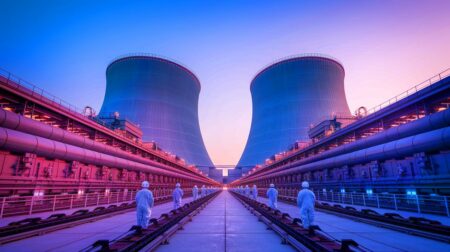The Czech Republic has many things to recommend it, but a solid clean energy plan isn’t one of them at the moment. To wit: a think tank has analyzed all 27 European Union members states and found the Central European nation to be at the bottom of the heap when it comes to clean electricity.
Only Poland, a bastion of coal mining, uses more coal for electricity generation than the Czech Republic within the EU. As matters stand, coal will continue to account for a third of electricity production by 2030 in Poland, the Czech Republic and Bulgaria, which will set back the EU’s aim of reducing its overall carbon emissions to mitigate the effects of climate change.
Currently, the Czech Republic, also known as Czechia, languishes at the bottom when it comes to its share of clean energy in the EU as it plans to have less than 5% of its power output generated by solar and wind energy by 2030. Neighboring Slovakia is likewise a laggard with 6%.
By contrast, the Netherlands, in the No 1 spot, intends to have as much as 60% of its electricity demands met by solar and wind by 2030. It followed by Spain with over 50% and Denmark with slightly less than 50%.
“Combined, by 2030, wind and solar are expected to deliver about 40% of the EU27’s overall electricity needs. However, in general, the share is considerably lower in eastern Europe than in the rest of the EU,” the report’s authors note. “By 2030, many eastern European countries will have lower shares of wind and solar in their electricity mixes than is being achieved by the leading countries today.”
New nuclear reactors, which will be sources of clean energy, are in the plans in the Czech Republic, Poland and Bulgaria, among other Eastern European nations, but they won’t be online before 2030 and so energy will continue to be generated in ways that produce plenty of carbon emissions in the coming decade.
Yet despite this grim outlook there are some promising signs. Although in the Czech Republic only 1% of the domestically generated electricity is currently produced by wind turbines, which number a mere 200, plenty more could soon be in the works, energy experts say. The small Central European nation could learn from its neighbors Germany and Austria, which have invested heavily in wind energy.
“By the year 2040, wind power could account for 10 to 25 percent of energy use in the Czech Republic, provided that we see a simultaneous rise in consumption,” says David Hanslian, an expert at the Institute of Atmospheric Physics at the Czech Academy of Sciences in Prague.
For that to happen, however, a change in the mindset of local policymakers is required, Hanslian observes.
“The biggest barrier is in the minds of the population,” he says. “It is very much about the way we talk about wind energy and the types of associated topics we focus on in our public discussion. We focus mainly on the negatives but forget that wind power is one of the cleanest sources of energy.”
Did you like it? 4.5/5 (27)








